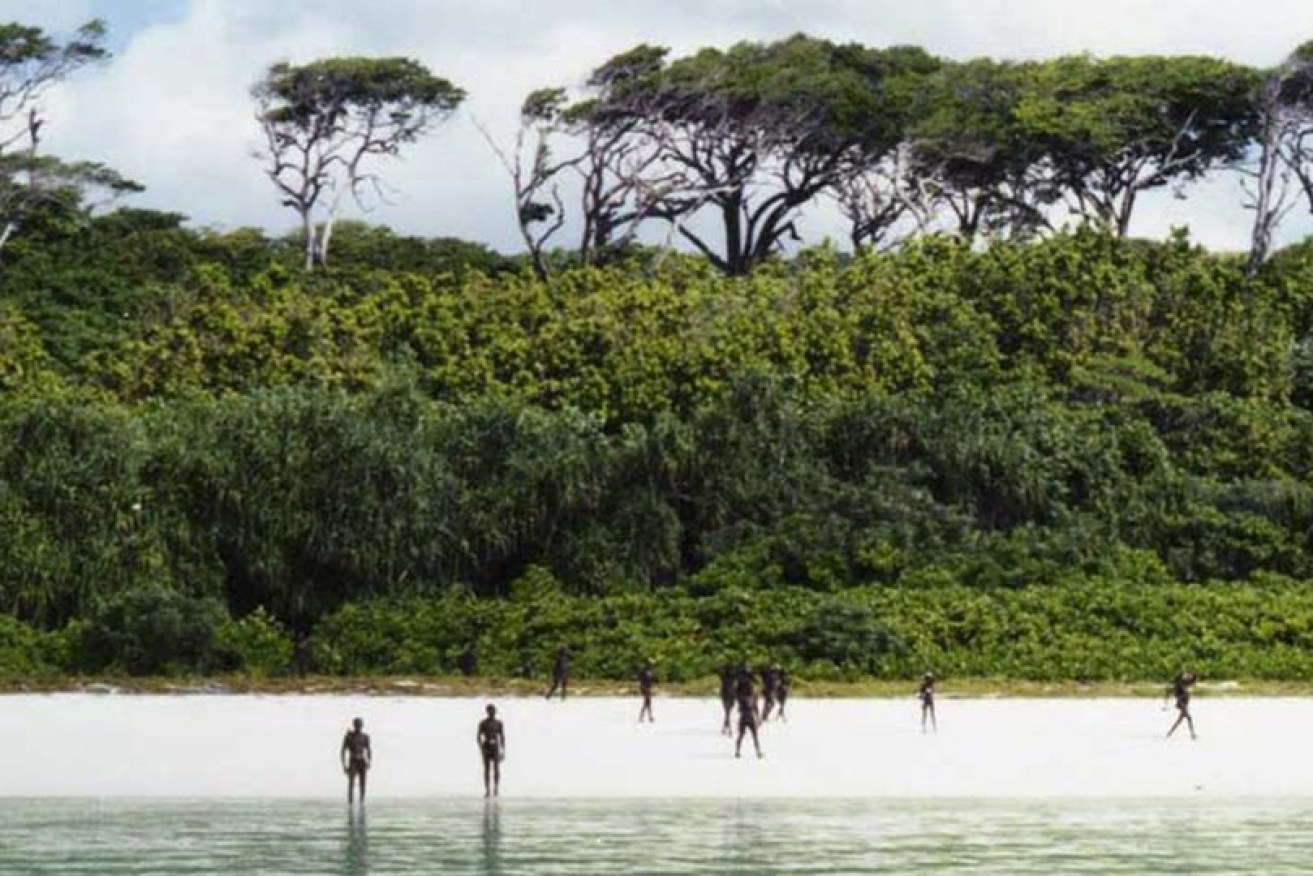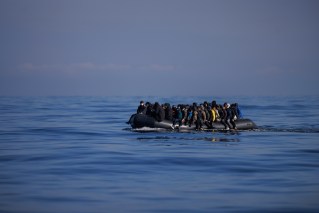Lost and found: The tribes who don’t want to know you


Members of the reclusive Sentinelese tribe have resisted outsiders for centuries. Photo: Indian Coast Guard
If he’d been lucky, John Allen Chau would have been arrested by the Indian Coast Guard and thrown into jail before reaching the prohibited shores of North Sentinel Island – as has happened to hundreds of Burmese and Indian poachers in recent years.
Once the American Christian missionary reached the beach it was inevitable that he’d be shot with arrows and spears and killed.
The coast guard isn’t arresting interlopers to protect them from a skewering – they are locked up to keep them and their modern-day germs away from the vulnerable Sentinelese people.
The American was breaking the law
It’s feared the pre-Neolithic Sentinelese – whose number is no more than a few dozen – have not developed immunity to common viruses such as measles and influenza.
They certainly haven’t developed a sociable attitude to visitors. In 1974 they famously shot an arrow into the leg of a National Geographic director – and then speared and buried the live pig and toy doll the crew had brought as gifts.
In 2005, they killed two fishermen whose boat broke from its night anchor and came ashore as they slept.
John Allen Chau’s body has been left to rot on the beach. Unless the US government gets heavy about it, he’ll remain there, for the sake of preserving this small tribe that originally came out of Africa, and whose isolated language may be 70,000 years old.
The short-statured Sentinelese are one of several indigenous peoples living on the Andaman and Nicobar group of islands in the Bay of Bengal. They are the only indigenes in the region to have successfully resisted mixing with other people.
The fate of their neighbours, the Jarawa – who once equally resisted visitors by raining down arrows from a perch in the trees, and stood up to the guns of the Indian Bush Police – is grim.
The human zoo
In the late 1960s, the Jarawa gradually gave their trust to anthropologist T.N. Pandit. After 30 years of careful interactions, by the mid-1990s the Jarawa had stopped shooting trespassers and begun to roam neighbouring settlements, where they found food (sugar and rice) that required neither hunting nor gathering.
Meanwhile, a road had been cut through the jungle. The Jarawa began to fish and weave baskets in exchange for money. Eventually, they became the residents of a human zoo for tourists.
In a 2017 New York Times profile of T.N. Pandit’s work and subsequent regrets, there are now video clips showing Indian tourists throwing food to the Jarawa – the lost tribe! – at the side of the road, with the attitude of feeding chimps or pigeons.
In 2004, the Indian government formulated a new policy toward the Jarawa, with the primary goal of protecting them “from harmful effects of exposure and contact with the outside world”.
In fact, the government declared Sentinel Island a tribal reserve in 1956. Official attempts to communicate with the Sentinelese stopped in 1988.
A three-mile no-go zone was eventually established around the island – and the seven fishermen who ferried John Chau ashore have since been arrested and face possible charges of being culpable for his death.
In 2017, the government ruled taking photographs or making videos of the aboriginal Andaman tribes would be punishable with imprisonment of up to three years.
For the Jarawa, though, the damage was done. The Sentinelese – who haven’t progressed beyond the Stone Age as a society – know nothing of this. They have simply stuck to their instincts to keep the modern world at bay. They’re not alone in that regard.
There are, globally, about 100 groups of indigenous peoples – usually characterised as “lost” or “uncontacted” tribes – trying to keep their way of life hidden, many in remote reserves granted to them by the authorities. Most of these peoples are in South America.
In recent weeks, according to the National Geographic, indigenous rights groups have been pushed into a new and uncomfortable debate about how best to protect reclusive peoples. Brazil’s indigenous affairs agency, FUNAI, set off this disquiet by making public two videos recorded during field expeditions.
Is it time to run up the flag?
The videos effectively show the impossibility and complex ethics of trying to shield one group of people from the 21st century.
In one of the videos, a man is seen chopping at a tree. He’s been living alone for the past 22 years in a reserve that is meant to shield him from loggers and ranchers “who are believed to have wiped out the rest of his tribe in spasms of violence during the 1980s and 1990s”.
No one knows the name of the man, or the name of the tribe he once belonged to. He is unaware the people assigned to protect him are filming him from their hide in the trees.
The second video is taken from a drone and shows a farmed clearing in the jungle, home to a small group of Flecheiros, or People of the Arrow. People can be seen wandering about. Officials said the video was taken last year, in far western Brazil, as part of an investigation into an alleged massacre perpetrated against the tribe.
While rights groups bemoaned the intrusions, the FUNAI officials said they decided to release the images “after a consensus was reached among veteran field agents to heighten awareness within Brazil and around the world of the existence of the isolated tribes and their increasingly precarious status”.








